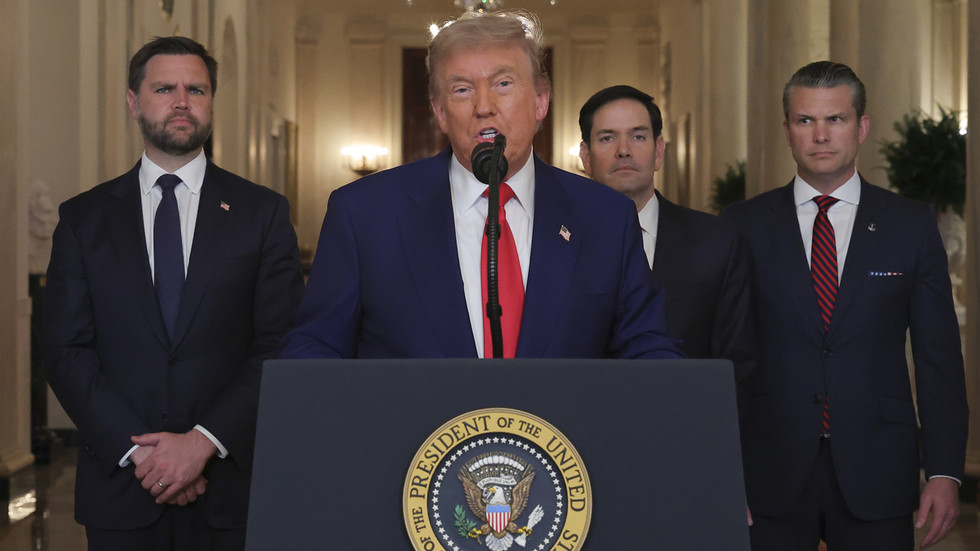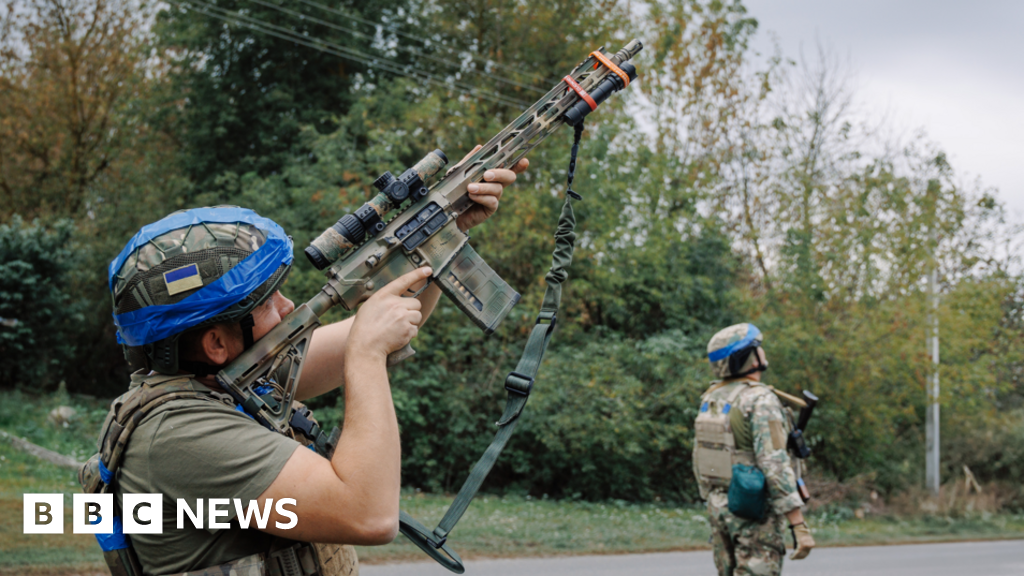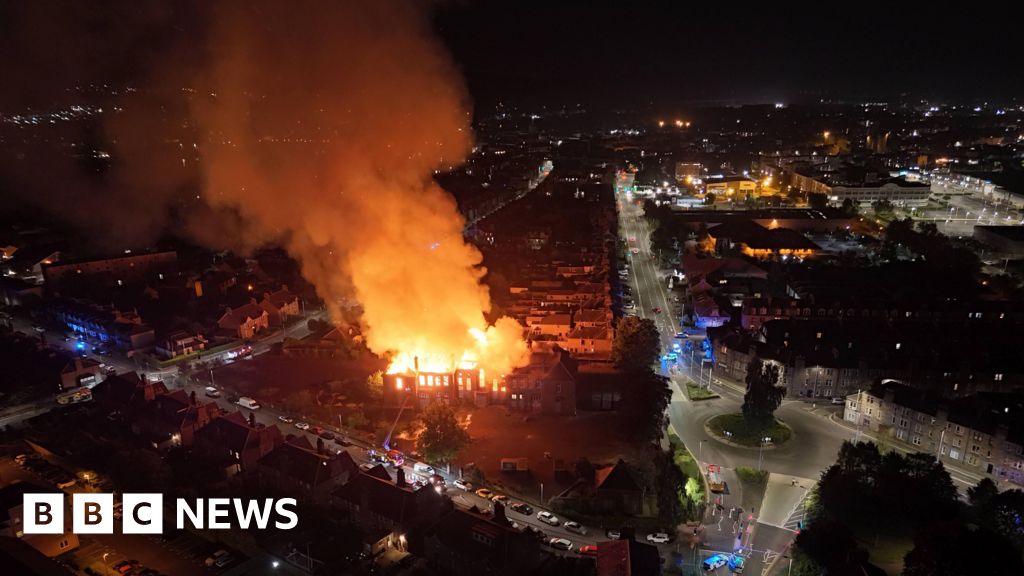The U.S. military struck three sites in Iran early Sunday, inserting itself into Israel ’s effort to decapitating the country’s nuclear program in a risky gambit to weaken a longtime foe amid Tehran’s threat of reprisals that could spark a wider regional conflict.
The decision to directly involve the U.S. comes after more than a week of strikes by Israel on Iran that have moved to systematically eradicate the country’s air defenses and offensive missile capabilities, while damaging its nuclear enrichment facilities. But U.S. and Israeli officials have said that American stealth bombers and a 30,000-lb. bunker buster bomb they alone can carry offered the best chance of destroying heavily-fortified sites connected to the Iranian nuclear program buried deep underground.
President Donald Trump was the first to disclose the strikes. There was no immediate acknowledgment from the Iranian government. Iran’s state-run IRNA news agency reported that attacks targeted the country’s Fordo, Isfahan and Natanz nuclear sites. The agency did not elaborate.
Here is the latest:
Flames see at Fordo nuclear site in Iran after US strike, report says
Iran's semiofficial Fars news agency has published an account by one of its reporters, saying flames could be seen after the bombs hit the Fordo facility.
Fars, which is believed close to Iran’s paramilitary Revolutionary Guard, said its reporter heard anti-aircraft fire around 2:05 a.m. local time and explosions two minutes later.
“When I reached the vicinity ... the air defense system was operating intensely, and its activity was clearly visible in the sky,” the reporter said. Later on, the reporter said, "flames suddenly erupted from the direction of Fordo.”
Simultaneously with the flames, a faint trail of smoke and a significant amount of dust rose in the area, Fars quoted the reporter. It offered no photos or video showing the attack
Israeli officials lauded the strikes
Israeli officials lauded the strikes in sweeping and dramatic language. Israel’s president, Isaac Herzog, thanked Trump and said the strikes marked a “decisive moment between the axis of terror and evil and the axis of hope.”
Israel’s defense minister congratulated Trump on what he described as a “historic decision.”
US steps up efforts to evacuate citizens from Israel
The U.S. is stepping up evacuation flights for American citizens from Israel to Europe and continuing to draw down its staff at diplomatic missions in Iraq as fears of Iranian retaliation again U.S. interests in the Middle East grow.
Even before those airstrikes were announced by President Donald Trump on Saturday evening in Washington, the U.S. embassy in Jerusalem announced the start of evacuation flights for American civilians from Israel.
Sixty-seven American citizens left Israel on two government flights bound for Athens, Greece on Saturday and four more evacuation flights to Athens were planned for Sunday, according to an internal State Department document seen by The Associated Press.
In addition to the flights, a cruise ship carrying more than 1,000 American citizens, including several hundred Jewish youngsters who had been visiting Israel on an organized tour, arrived in Cyprus, according to the document.
— Matthew Lee
Israel closes airspace in wake of US attacks
Israel’s Airport Authority announced it was closing the country’s airspace to both inbound and outbound flights in the wake of the U.S. attacks on Iranian nuclear sites.
The agency said it was shutting down air traffic “due to recent developments” and did not say for how long.
Iran says ‘no signs of contamination’ after US strikes nuclear facilities
Iran said early Sunday there were “no signs of contamination” at its nuclear sites at Isfahan, Fordo and Natanz after U.S. airstrikes targeted the facilities.
Iranian state media quoted the country’s National Nuclear Safety System Center, which published a statement saying its radiation detectors had recorded no radioactive release after the strikes.
“There is no danger to the residents living around the aforementioned sites,” the statement added.
Earlier Israeli airstrikes on nuclear sites similarly have caused no recorded release of radioactive material into the environment around the facilities, the International Atomic Energy Agency has said.
Strikes used ‘bunker buster’ bombs and cruise missiles
The U.S. military used “bunker-buster” bombs in its attack on Iran’s Fordo nuclear fuel enrichment plant, which is built deep into a mountain, a U.S. official said. That official spoke on condition of anonymity to discuss military operations.
The 30,000-pound bunker-busting American bomb known as the GBU-57 Massive Ordnance Penetrator uses its weight and sheer kinetic force to penetrate underground and then explode. Saturday’s strikes were the first time it has been used in combat.
U.S. submarines also participated in the attacks in Iran, launching about 30 Tomahawk land attack missiles, according to another U.S. official, speaking on condition of anonymity to discuss military operations.
It was not clear what those missiles were aimed at. Two Iranian nuclear sites besides Fordo were attacked, Isfahan and Natanz.
— Lolita C. Baldor
Trump called Netanyahu after strikes
Israeli Prime Minister Benjamin Netanyahu said in a video that Trump called him after the strikes.
“It was a very warm conversation, very emotional,” Netanyahu said.
Speaking in Hebrew, he called Trump a friend of Israel like no one before him.
“In my name, and on behalf of all citizens of Israel and on behalf of the entire Jewish world, I thank him from the bottom of my heart.”

 4 hours ago
3
4 hours ago
3









